Newtown House (Tramore)
Houses within 10km of this house
Displaying 27 houses.
Houses within 10km of Newtown House (Tramore)
Displaying 27 houses.
| House name | Description | |
|---|---|---|
| Bayview House (Middlethird) | At the time of Griffith's Valuation, Rev. Nicholas Cantwell was leasing a property, valued at £18 10s, from Edward O'Neill Power. It is labelled as Boarding School on the 1st edition Ordnance Map but appears as Bayview House on the later 25-inch edition of the 1890s. Rev. Cantwell was parish priest of Tramore and the builder of the Catholic Church there. This house is still extant and occupied. |
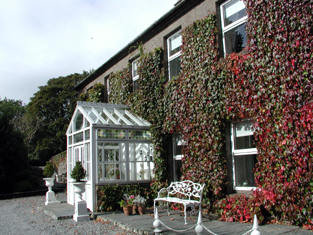
|
| Beechmount (Tramore) | In 1850 Henry Lane was leasing this property from the O'Neill-Powers when it was valued at £10. A house still exists at the site. | |
| Newtown Lodge (Tramore) | Leased by John H.Barry from the O'Neill-Power estate in 1850, when it was valued at £18 15s. There is still an extant house at the site. | |
| Newtownhill Cottage | In 1850 Edward Popham was leasing this property from Edward O'Neill-Power when it was valued at £13 10s. | |
| Dunhill Lodge | John Power was leasing this property from the Palliser estate in 1850 when it was valued at £19. Leet's directory (1814) and early nineteenth century will records (1834) show it was the residence of William Power. There is still an extant house at the site. | |
| Benvoy | Mrs. Catherine Power held Benvoy in fee at the time of Griffith's Valuation, when it was valued at £15 5s. In 1814 William Power was resident at Benvoy. There is still a house at this site. | |
| Butlerstown House (Middlethird) | Edward T. Power was leasing this house from Richard Duckett at the time of Griffith's Valuation when it was valued at £11 15s. This house is longer extant. | |
| Butlerstown Castle | The Sherlock family had been in possession of Butlerstown Castle and estate since the 1560s. Wilson, writing in 1786, refers to Butlerstown as the seat of Thomas Sherlock. In the 1790s a disastrous fire saw much of the property destroyed and subsequently the family moved to county Kilkenny although they continued to hold estates in the area. At the time of Griffith's Valuation, it was the property of Robert Backas, three generations of whose family lived at Butlerstown, before departing at the end of the 1850s. Between then and the 1880s Butlerstown was occupied by Samuel Ferguson. In 1894 Slater refers to the property as the seat of Thomas Prendergast. Only the ruin of the castle survives but the Coachhouse is in use as Guest Accomodation. | |
| Ballyduff Glebe | Reverend John Bourke was leasing this property from Viscount Doneraile at the time of Griffith's Valuation, when it was valued at £13 10s. It continued to serve as the Rectory for the parish and there is still a house at the site. | |
| Whitfield Court | In 1850 William Christmas held Whitfield in fee when it was valued at £49. The National Inventory of Architectural Heritage indicates the house was built by him between 1820-1849, replacing an earlier house. Local sources indicate that this earlier house was in the townland of Whitfield and the name was transferred to the existing house when it was built in the adjacent townland of Dooneen. Leet records the earlier property as the seat of Thomas Christmas in 1814. Smith, writing in 1774, mentions the house as "an elegent seat belonging to Thomas Christmas, formerly a Dobbyn castle". In 1786 Wilson refers to Whitfield as the seat of William Christmas. The nineteenth century house is still extant but no longer occupied. |
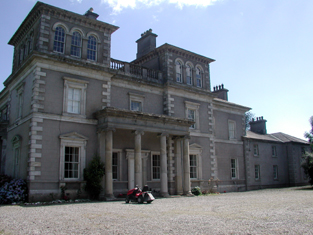
|
| Pembrokestown House | The house at Pembrokestown probably came into the Esmonde family through the marriage, in the eighteenth century, of Sir James Esmonde, seventh baronet, to Ellice White, daughter of Thomas White, of Pembrokestown. In 1814 Leet refers to it as the seat of William Power. At the time of Griffith's Valuation, in 1850, it was held in fee by Mrs. Anne Esmonde, and valued at £21. In 1894 Slater refers to it as the seat of Patrick W. Power. A house is still extant at Pembrokestown. It was offered for sale in 2025. |
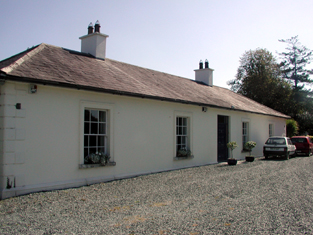
|
| Corbally | Michael Kirwan was leasing this property from the Fortescue estate at the time of Griffith's Valuation, when it was valued at £11 18s. A property built after the publication of the 1st Ordnance Survey. A house and farm are still extant at the site. | |
| Summerville/Corbally More | In 1848, Lord Fortescue was leasing this property to Thomas Dillon when it was valued at £38. In 1774, Smith refers to Somerville as the seat of Thomas Wyse. The National Inventory of Architectural Heritage indicates that the Scottish-Baronial style mansion now extant was built in the late 1870s. The property is labelled as Summerville on the 6-inch Ordnance Survey map but on the later 25-inch map the new house is labelled Corbally More. It was severely damaged by fire in the twentieth century but re-built and is still extant though now in poor repair. In 2015 it was offered for sale. |
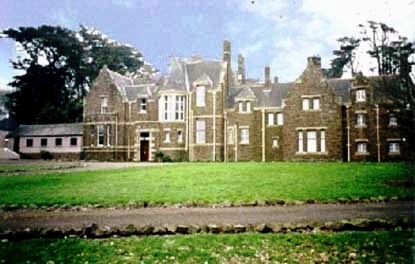
|
| Ballinamona Park [House] | In 1848 Ballinamona was held in fee by Thomas Carew when it was valued at £51. In 1814 Leet notes it as the residence of Robert Carew. Lewis refers to it as the seat of T. Carew in 1837. Smith, writing in 1774, describes it as a "well-built house" while Wilson, writing twenty years later refers to it as " a beautiful seat with large demesnes". Brady notes that it was rebuilt following a fire in the late nineteenth century. By 1906 it was owned by Robert Thomas Carew (jun) and valued at £70. It is still extant. | |
| Grace Dieu | This house is labelled on the 25-inch Ordnance Survey map of the 1890s as Grace Dieu. In 1848 it was leased by James Anderson from the Carew estate and valued at almost £49. In 1786 Wilson refers to Upper Grace Dieu as the seat of Mr. Anderson. It is still extant and run as a retreat centre by a religious order. |
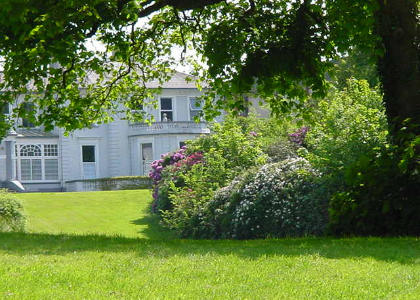
|
| Carriganard | Two members of the Hartry family, William and NIcholas, were leasing houses from the Lane-Fox estate at Carriganard in 1848. William occupied the house valued at £12 7s while Nicholas held a house valued at £10 [S579089]. The original buildings do not appear to be extant now. | |
| Ballyhoo | William Hurley was leasing this property from the Lane-Fox estate in 1848 when it was valued at almost £12. Modern buildings exist at the site now. | |
| Ballinvella Hennessy | In 1848 John Hennessy was leasing this property from John B. Burroughs when it was valued at £11 11s. | |
| Ballinavella Byrne | In 1848 Charles Byrne was leasing this property from John B. Burroughs, when it was valued at over £13. | |
| Couse Mill | Richard Power was leasing this property from David O'Neill Power at the time of Griffith's Valuation, when it was valued at £22 and included a mill. The mill is labelled on the 1st-edition Ordnance Survey Map but does not appear on the later 25-inch edition of the 1890s. | |
| Monamintra | Mrs. Johanna Lyons was leasing this property from Lord Fortescue's estate at the time of Griffith's Valuation, when it was valued at £10. An extensive farm occupies the site now. | |
| Cliff Lodge/Cliff Cottage | In 1848, Patrick Keely was leasing this property from the Barron estate when it was valued at almost £14. It is labelled as Cliff Lodge on the 1st-edition Ordnance Survey Map but as Cliff Cottage on the 25-inch edition of the 1890s. The house is no longer extant. | |
| Coolum | At the time of Griffith's Valuation, Patrick Power was leasing this property from Lord Fortescue's estate when it was valued at £14. An extensive farm is extant at this site now. | |
| Coolum Lodge | In 1848 Lady Carrick was leasing Coolum Lodge from the Fortescue estate when it was valued at over £26. It is no longer extant. | |
| Gortahilly | William Power was leasing this property from Lord Fortescue's estate in 1848 when it was valued at over £16. A farm still occupies the site. | |
| Lisselty | At the time of Griffith's Valuation, Edmund Power was leasing this property from the Fortescue estate when it was valued over £12. Some buildings are still extant at the site. | |
| Newtown Glebe | Rev. Edward Daulton was leasing this property from the O'Neill-Power estate in 1850 when it was valued at £14. There is still a house at the site. |

